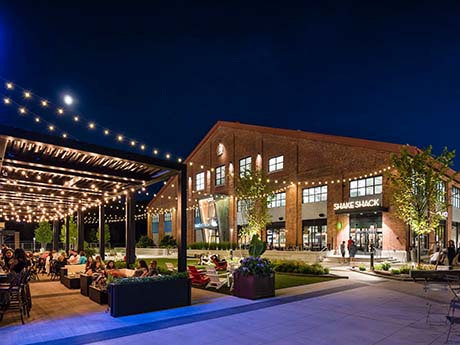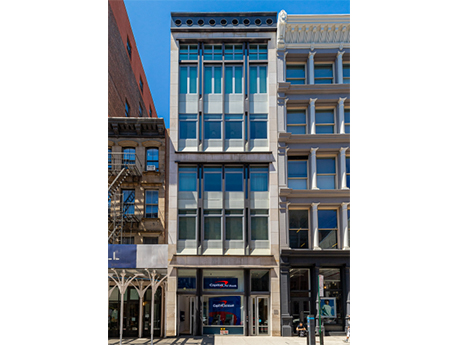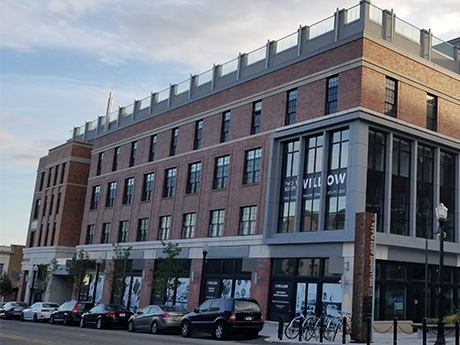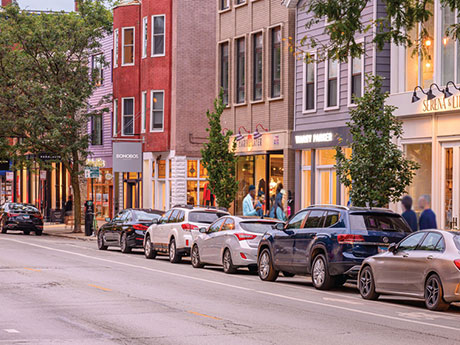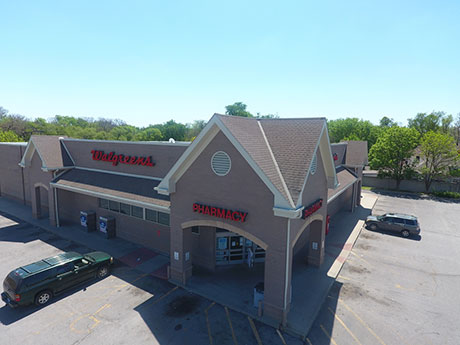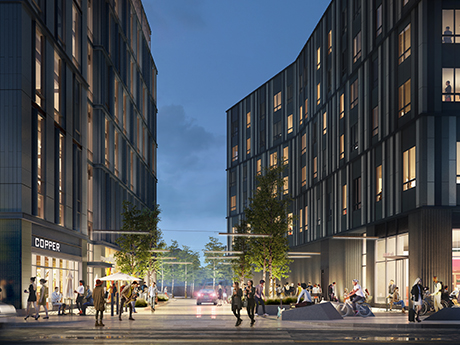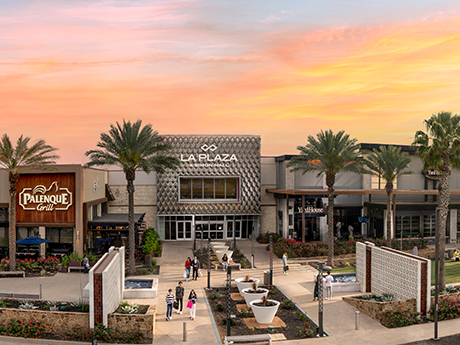By Kyle Knight, senior vice president, Weitzman Houston Houston’s construction of new retail space, after reaching a record low in 2021, is on track to exceed that level, based on projects in the pipeline for this year. But the increase is not large, and total new deliveries will remain on the conservative side. The limited new space is driving demand to existing projects and helping lift marketwide occupancy levels. The limited deliveries of new retail space, combined with healthy retail demand and limited closings, is helping Houston’s retail market build on the occupancy gains it experienced during 2021. As a result, the retail market currently has a healthy occupancy rate of 96.1 percent. The market remains among the strongest in recent memory, although economic issues — rising interest rates, increased construction costs, inflation — may lead to a slowdown. On the positive side, retailer, developer and investor interest remains at extremely high levels, since retail real estate is a long-term game that factors in short-term concerns. The retail market also bolstered by robust demand for small-shop space, new construction that is either built-to-suit or significantly preleased, healthy job and population growth and an economy that benefits from rising energy prices. …
Retail
By Kyle Knight, senior vice president, Weitzman Houston Houston’s construction of new retail space, after reaching a record low in 2021, is on track to exceed that level, based on projects in the pipeline for this year. But the increase is not large, and total new deliveries will remain on the conservative side. The limited new space is driving demand to existing projects and helping lift occupancy levels marketwide. The limited deliveries of new retail space, combined with healthy retail demand and limited closings, is helping Houston’s retail market build on the occupancy gains it experienced during 2021. As a result, the retail market currently has a healthy occupancy rate of 96.1 percent. The market remains among the strongest in recent memory, although economic issues — rising interest rates, increased construction costs and inflation — may lead to a slowdown. On the positive side, tenant, developer and investor interest remains extremely high since retail real estate is a long-term game that factors in short-term concerns. The retail market also benefits from several positive influences, including robust demand for small-shop space, new construction that is either built-to-suit or significantly preleased, healthy job and population growth and an economy that is bolstered …
By Taylor Williams As an exceptionally dense, compact market that’s only bordered by land on three sides, metro Boston and its brick-and-mortar retail sectors have long been subject to shortages of quality retail space. Even during the height of the pandemic, when some retailers and restaurants went under and sent vacated space back to the market, prime locations were quickly reabsorbed. As it did nationally during the shutdown of the U.S. economy, rent growth in Boston’s retail market subsided temporarily, only to rebound quickly via pent-up demand. Now, the economy is seemingly on the verge of recession, and consumers’ disposable incomes are being severely stretched by 40-year inflationary highs. Yet Boston’s healthy proportion of young people and strong growth in high-paying industries like tech, healthcare and life sciences still have numerous retail users and brokers feeling bullish on the market. But even the most aggressive and well-thought-out expansion plans can fall flat in the absence of good physical space in which to grow. A Tight Market According to data compiled by Newmark, there is roughly 500,000 square feet of pure-play retail space currently under construction throughout the Boston area. While construction timelines are fluid, the full-service real estate firm estimates …
By Brent Glodowski, director, capital markets group, Avison Young Conditions are looking up for retail real estate investment in New York City. In one sense, “up” is the only way to go for a sector that has been bumping along the bottom of a trough. But with inflation tempering investors’ recent fascination with multifamily and industrial properties, retail also offers opportunities to acquire price-corrected assets when those other property types hover near cyclical peaks. Retail’s Head Start New York’s retail real estate market was already suffering from changing consumer tendencies when COVID-19 arrived and thrust many retailers and their landlords into a full-blown crisis. Even when government-ordered shutdowns eased, remote work policies drained office buildings of the customer bases that had supported swaths of restaurants, shops and entertainment businesses. Home-bound workers became a redistributed daytime population, shifting demand for meal delivery and other retail to new areas. Hundreds of small businesses went under, leaving vacant storefronts in their wake. Some retailers altered business plans to serve shifting customer bases that had developed new, pandemic-influenced consumption practices. Landlords with vacancies to fill turned to traditional strategies, such as relocating tenants from out-of-the-way spaces to fill their most visible storefronts. Property owners …
By Brian Katz (CEO), Amy Staats (vice president), Jonathan Greenberg (director), Adam Caplan (director) and Hugh Scullin (vice president) of Katz & Associates The Northern New Jersey retail real estate market has been flourishing in the post-COVID-19 era. Inventory continues to shrink across the board, with exceptional demand for drive-thru locations and mid-size boxes. Furthermore, the modern, well-anchored neighborhood and power centers seldom have more than one or two small shop vacancies. Some categories in high demand include discount apparel, grocery, food, health and beauty, fitness and medical. Northern New Jersey specifically benefits from its critical mass and its ease of access to main roads and points of entry. Tenants that have been able to refocus and adapt have thrived in a market that already has a lot going for it. Simply put, the post-COVID bounce has been better than we could have imagined, and from a company standpoint, the pipeline of deals that are in the works or have closed has been among the strongest in our history. Leasing Activity Leasing activity is up. Market adjustments aside, leasing activity has pretty much returned to pre-pandemic levels. In some instances, it’s even easier to get deals across the finish line …
By Joe Aquino, president, JAACRES When Barneys New York department store closed in 2020, we saw a dramatic relocation of luxury retail on Madison Avenue to the south, apparently with a common goal of establishing better proximity to East 57th Street. Prior to that event, many luxury brands enjoyed a shop within a shop at Barneys, plus another store on the corridor, usually further uptown. Prior to the COVID-19 pandemic, this stretch of Madison Avenue was so tight for space that we saw East 59th Street, a major side street, securing tenants like Dior, Bathing Ape and Balmain. During the pandemic’s lockdown phases, retail vacancy rose dramatically, even in the most desirable areas. Now, post-pandemic, we see spaces along Madison Avenue getting filled by new and established luxury retailers ready to make a statement. Here are some of the key transactions that have either been recently completed or are in progress: Givenchy just left its cozy quarters at 749 Madison Ave. at the southeast corner of 65th Street to take the southeast corner at 625 Madison Ave. Versace will open in Givenchy’s place this fall. Wolford, a maker of luxury seamless tights, took the Lalique store at 607 Madison Ave. …
By Kelly Nickele, Mid-America As the summer season begins, retailers and restaurateurs in Chicago are scheduling tours for the city’s warmest months of the year, and overall leasing velocity is continuing to increase. Here’s a quick review of the top retail real estate trends in Chicago now. Digitally native brands continue to expand, embracing omnichannel sales strategies. I grew up at Fremont & Armitage in Chicago’s Lincoln Park neighborhood through my high school years. I remember when Aldo, Barbour and Bebe anchored Halsted, and United Colors of Benetton (now Interior Define), American Apparel (now Parachute), Intermix (now Outdoor Voices) and Hanig’s (now Marine Layer), were the mainstays of Armitage. I saw tenants like BCBG relocate from Halsted (now Apotheco Pharmacy) to Armitage (now Serena & Lily), and locals like Art Effect and Lori’s remain relevant while the trade area garnered national attention and the 60614 zip code continued to report strong catalog and ultimately e-commerce sales. I’ve experienced the rise and fall of many retailers, the emergence of digitally native brands, the major shift in how and where we shop and the influence of social media in the retail industry. As a consumer and a retail advisor, I believe in …
Wichita experienced considerable retail and restaurant expansion throughout 2021, with other new stores planned for 2022. The two biggest new players to Wichita include Top Golf at 29th Street and Greenwich Road, now under construction, and Scheel’s entering the market with a new 220,000-square-foot store to be located in the former Sears space at Towne East Square. Top Golf is anticipated to open in late 2022, spurring more retail activity on North Greenwich. Furniture stores have been actively backfilling big boxes, including Bob Mills who took the former Michael’s, and Wichita Furniture, a strong regional player, taking the former 100,000-square-foot Kmart building on West Kellogg/US-54. Discount stores have continued to find a way to open more locations to increase their footprints in the market, both new construction and conversion of former retail spaces. Ollie’s Bargain Outlet opened its west store at Central and Ridge roads, and is also opening a store at Brittany Center. Quick-service restaurants (QSRs) have been active, including two new locations opening in 2022 for Dunkin’ and several new Dutch Bros Coffee locations as they enter the market as well in late 2022 and 2023. Tropical Smoothie Café opened a location last year and Smoothie King …
By Taylor Williams As the pandemic recedes from the minds and wallets of American consumers, the food and beverage (F&B) industry finds itself embroiled in a host of new financial problems, driven this time by pure economics rather than public health. Inflation and supply chain disruption are working both in tandem and within independent channels to bring new hardships to the sector, mainly in the form of elevated costs and delayed timelines for operating and expanding restaurants of all types. At the same time, F&B owners and operators finds themselves awash with pent-up demand to dine out, drink, socialize and enjoy entertainment attractions and activities. Meanwhile, across the Northeast, quality F&B spaces that went dark during the first 18 months of the pandemic have largely been reabsorbed. That confluence of circumstances encapsulates major incentives and opportunities for landlords to raise rents. Add in the fact that these property owners have in many cases been operating on deferred, reduced or restructured rent payment schedules for much or all of the last two years, and the move to push F&B rents is even more justifiable. For owners of traditional retail product — from power centers to neighborhood strip malls to single-tenant, net-leased …
By Randy Summers, vice president, CCIM, CPM, Davis Equity Realty “Y’all come” is the message being sent to developers, retailers, franchisees, quick-service restaurants, corporations and manufacturers from the Rio Grande Valley (RGV) region of Texas — and all these users seem to be heeding the call. The local economy seems to be hitting on all cylinders, albeit with constraints on labor and supplies, as well as rising costs. The four counties that statistically make up the RGV — Hidalgo, Cameron, Starr and Willacy — combine to produce a regional population of over 1.4 million and a workforce population of over 485,000. While COVID-19 continues to have lasting effects on labor, the Small Business Administration reported that the Lower Rio Grande Valley District, which serves 14 counties, had 44,471 Paycheck Protection Program (PPP) loans approved totaling $2.4 billion. Of that, 71 percent were loans for the RGV’s four counties representing 59 percent of the dollar amount, or $1.4 billion. That is a considerable amount of money that was pumped into the local economy and doesn’t include the $64.6 million in grants provided to restaurants through the Restaurant Revitalization Fund out of the American Rescue Plan Act. Year-to-date sales tax revenue provided …


